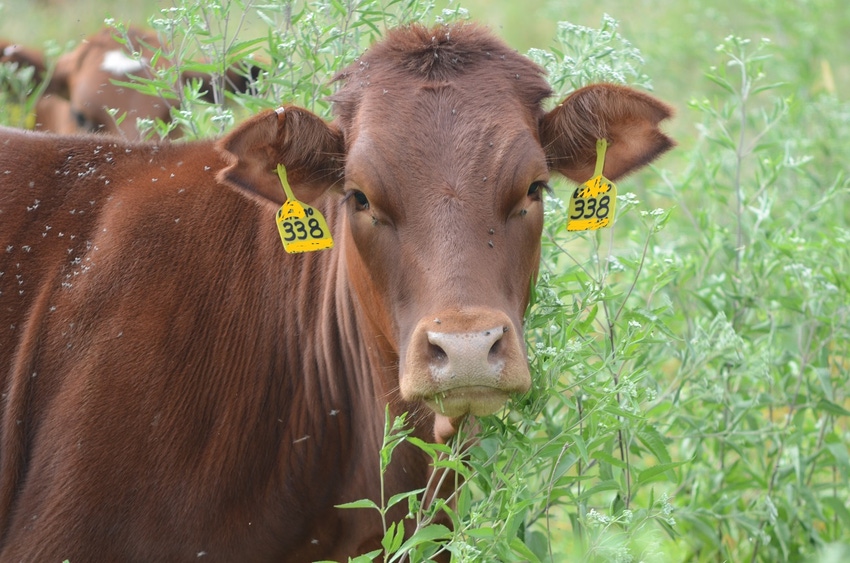
Chip Hines, a retired Colorado rancher, has written a very good article he titles “The natural cow.” His ideas are sound.
In his brief, Hines spells out a lot of what is wrong with the cattle business today and how we can go about making improvements. He does not recommend any of the exotic fixes – gene splicing, intensive single-trait selection with EPDs, or even the whole range of pesticides, growth promoters and medications deemed absolutely necessary by conventional management wisdom.
He holds the strange belief that many, perhaps most, of the problems such as poor profitability, internal and external parasites, sickness, poor reproductive performance, which are tormenting cattle and cattle people can be alleviated simply by selecting for the traits that contribute to animals being healthy, productive and low-cost to produce.
He would have us believe the cow that offers the most benefit to an operation that must turn a profit is one that has not been “improved” by selective breeding to fix traits seen as desirable today. Things like heavy milking, scant body fat, heavy weaning weights, and high dressing percentages (read that fish-bellied) are not in the description of a natural cow.
Cattle evolved over long periods of time to be well suited to survive in the environment they inhabited. Likewise their preferred habitat, grasslands, evolved along with cattle and other grazing animals in an interdependent and mutually beneficial partnership. All this took place without the benefit of 2-4,D or fly tags.
It happened through natural selection of both animals and members of the plant community. The organisms best suited to the conditions present produced the most and the healthiest offspring. The animals less suited – the cow that dropped her calf in a snow bank in January or the bull that couldn’t stack on body fat for winter use – didn’t leave a lot of offspring. Extreme types of all sorts do not fare well in nature. Only after humans became powerful could things like the suitcase cattle of the 1950s or the race horse cattle of the 1970s come into being. We got more powerful but not necessarily smarter.
Hines ventures deeper into heresy by suggesting that the time, labor and money spent putting up and feeding out hay would yield much greater rewards if spent improving the ability to practice good rest-rotation grazing management. This sort of thinking flies in the face of current recommendations from university for cattle production and is based on the rather old-fashioned notion that a cow can, quite cheaply, fill most (all) of her nutritional needs by grazing. This is true provided the cow is the natural, unaltered type. It is not true for the oversized, gutless wonders preferred by the feedlots.
The people who have resisted the call to increase production per head and instead focused on profit per acre and/or profit per dollar invested find that their costs of production are a fraction of the “average” costs bandied about by industry spokespeople. With this alternate way of thinking, it is true that dollars per individual calf will be less, but profitability of the operation will increase dramatically.
I have mentioned it before, but in my misguided youth I spent a lot of time and effort transforming a set of rather small but profitable cows into a set of large unprofitable cows. I was doing it right, according to the experts, but I almost broke the ranch before I woke up to the fact that to be sustainable, production must be profitable.
The amount of money coming in is not nearly as important as the difference between what is coming in and what is going out. The easiest way to gain profitability is to reduce costs in ways that have little or no negative effects on income. There are many ways to do this but one of the best is to select for Hines’s natural cow and then copy nature’s management plan. Match forage demand to forage supply by timing periods of heavy demand, such as calving or rapid growth of yearlings, to occur during periods of forage abundance. Look for ways not to reduce the cost of a practice, but rather for ways to do away with the need for the practice.
You can read the whole of Hines's natural cow essay on my website, http://waltdavisranch.com. He also has three other books worth reading if you have any interest in making money in the cattle business on Amazon: How did we get it so wrong, Time to change, and A slantwise guide to prosperity. They are all valuable. While you are on Amazon, check out the new book from Tony Winslett and myself: Do your strawberries taste red?
About the Author(s)
You May Also Like




